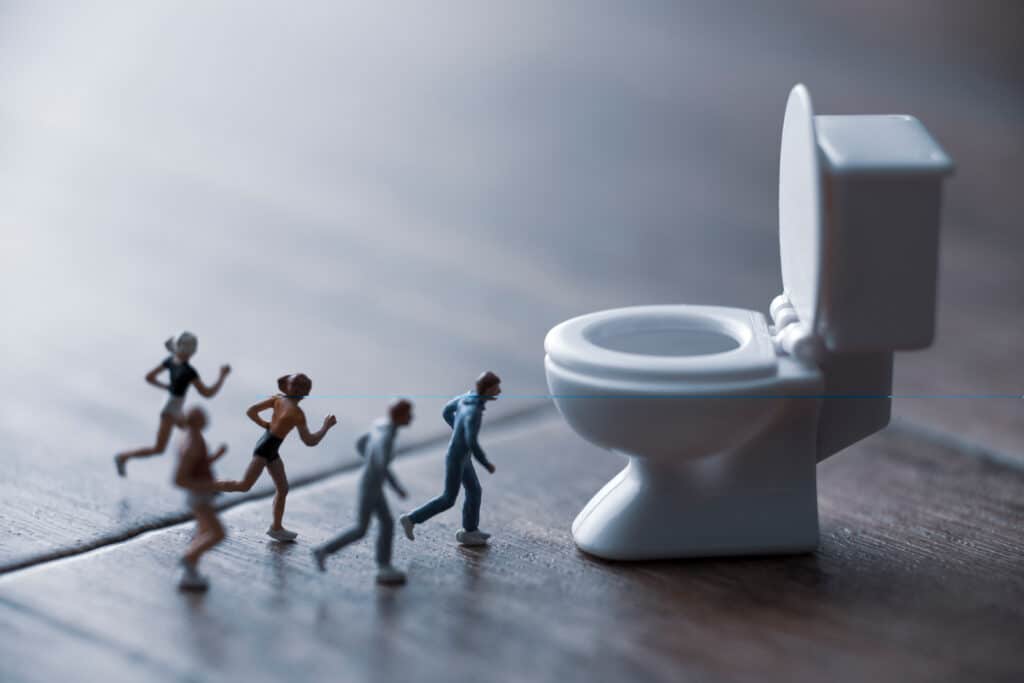It’s time to address a somewhat taboo topic. Urinary incontinence (UI). Because it’s not often talked about, many people don’t realize that the condition is more common than you might think. Millions of Americans deal with the anxiety and embarrassment that can result from this condition. Let’s talk about how we can fix urinary incontinence with a trip to a physical therapy clinic!
A Common Condition, A Taboo Topic
At any given time, approximately 1 in 25 people in the world are suffering from urinary incontinence. That’s around 300 million people who have to deal with the stress, inconvenience, and embarrassment this issue can cause. Despite how common it is, UI carries a stigma that can prevent them from seeking treatment based on the assumption that it is a relatively rare condition. Luckily, there are smart solutions like TESLAChair Functional Magnetic Stimulation and similar treatments available to help strengthen weakened pelvic floor muscles and alleviate urinary incontinence.
Who Is At Risk?
Urinary incontinence can be an issue for people of all ages and genders. One of the biggest barriers to getting help for many is the thought that “people like me don’t have this problem.” Whether you’re male or female, young or old, there are many thousands of people in situations similar to yours.
While urinary incontinence can affect anyone at any age, there are some groups that are more at risk than others.

1. Women who have given birth
Pelvic floor dysfunction (PFD) after giving birth is one of the leading causes of urinary incontinence in women. Childbirth can wreak havoc on the strength and function of the pelvic floor and core muscles that play a major role in bladder regulation. Nearly one in every four women over the age of 40 suffer from at least occasional UI.
Regardless of the method of delivery, we recommend all women come see us to help “restore the core” after giving birth. We can help treat many of the common “mom issues,” like abdominal pain, weakness, prolapse and even the “mom pooch” resulting from diastasis recti.
2. Men with enlarged prostates or prostate cancer
Many incontinence issues in men stem from problems with the prostate. An enlarged prostate can cause pressure on the bladder and urethra, which can cause an urgent need to empty the bladder. This “lack of space” among the internal organs can also restrict the flow of urine, or make it difficult to fully empty the bladder.
If the prostate is removed as part of a cancer surgery, the opposite problem can occur. With more space added to the abdominal cavity, the bladder does not have the same support as it normally would. This can also result in increased episodes of incontinence.

3. Athletes
This one may surprise you. If anyone should have a good pelvic floor, shouldn’t it be a high-level athlete?
Many abdominal strengthening routines don’t spend a lot of time on the pelvic floor. Those that do target the pelvic floor often do so improperly. Just because athletes may appear strong doesn’t mean their pelvic floor is also at peak fitness.
It is also possible to have a pelvic floor that is too strong (or more accurately, too tight). A routinely overtight or “hypertonic” muscle is fatigued and has less strength to respond to the additional stress inputs imposed by athletic activity.
The 4 Types of Urinary Incontinence

Stress Urinary Incontinence
No, this is not the same as the “nervous pee.” Stress, in this case, means a physical action that increases abdominal pressure. Things like exercising, laughing, coughing and sneezing can cause the bladder to move downward and prevent the urethra from properly controlling urine.
Some people avoid treatment for stress urinary incontinence, because they think they can just avoid the triggering action. However, it is difficult to avoid many of the triggers of stress urinary incontinence, since many happen as a part of daily life. Even if you’re not a regular exerciser, you might find the need to run after your child, bounce on a trampoline with your kids, or survive a bumpy ride in a boat or airplane.

Urge Urinary Incontinence
Most of us know that hearing a trickle of running water when we already have to pee is extremely annoying. But what if you had that same urge frequently in your daily life?
Urge urinary incontinence is when your body doesn’t give you very much advance notice when it’s time to empty your bladder. This can be caused by a number of factors, ranging from temporary and minor to long-lasting and serious.
Short-term urge urinary incontinence can be caused by an infection, consumption of too much alcohol or caffeine, and certain foods and medications. Urge urinary incontinence that doesn’t resolve over time can be the sign of a more serious neurological issue or diabetes.

Overflow Urinary Incontinence
The human bladder can hold about 1.25-1.5 cups of urine. When your bladder is beyond capacity, you may leak small amounts of urine. This is known as “overflow incontinence,” and can result from weak bladder muscles and the inability to completely void the bladder during urination. This is especially common in men with enlarged prostates that exert pressure on the urethra and make starting maintaining a urine stream difficult.

Functional Urinary Incontinence
Sometimes incontinence is not the result of underlying pelvic floor and bladder problems, but is the result of a physical or mental condition that makes it difficult to get to the bathroom on time. This could include things like poor mobility or loss of dexterity that make the process of getting to the toilet and getting your pants down slower than it needs to be to avoid wetting yourself.
Even though functional incontinence doesn’t center as much around the pelvic floor muscles as other types, physical therapy can still help. By addressing underlying pain and correcting poor movement patterns, we can help reduce the amount of time a trip to the bathroom takes and help people “beat the clock” when en route to the bathroom.
Mixed Urinary Incontinence
It’s quite common to have combined causes from each category of urinary incontinence. The good news is that many of the treatment approaches also overlap. This is also where we can involve our medical team to help us pinpoint any underlying conditions that may be contributing to the issue.
Now is the Best Time to Fix Urinary Incontinence
If you’re having trouble with any kind of incontinence, physical therapy is a great way to get help! Simple exercises and habit changes can usually be quite effective at fixing urinary incontinence so you can get back to living life without worrying about where the nearest bathroom is. Don’t put off seeking treatment because symptoms seem infrequent, unimportant or embarrassing. We’re here to help!
Contact us now and we’ll help you start on the road to recovery!









